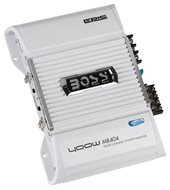An amplifier is not only used to increase the power to be sent to the speakers, but also to optimize the stereo system as a whole.
The benefits of a separate amplifier:
- Allows you to send more power to your speakers while minimizing distortion
- They are optimized to make the subwoofer work in the most suitable way.
- They are normally equipped with crossovers that simplify the installation and make an optimal performance of the speakers.
- The speakers are powered by a power source independent of the player, thus optimizing the absorption and performance. In addition, amplifiers normally use a Mosfet power supply that optimizes absorption especially on the highest peaks and commonly does not require the installation of a separate capacitor.
Depending on your stereo system, the amplifier must have an appropriate number of channels:
- Single channel, powers a single speaker and is normally used for subwoofers only
- 2 channels, power two speakers and a subwoofer
- 4 channels, powering 4 speakers and 2 subwoofers
In the case of multi-speaker stereo systems it is advisable to install more amplifiers, in which case it must be ensured that the main amplifier has a preamp output.
Prerogative Techniques
- Frequency response, the wider the range, the better the amplifier. A value of 15 Hz to 35,000 Hz is a good compromise.
- Signal to Noise Ratio (Y/N), the higher the value, the lower the noise. A value of >90db is a good compromise.
- Distortion, the lower the value, the lower the distortion. A value
- The RMS or peak power, it will be necessary that this is in line with the power of the speakers or subwoofers of the system.
